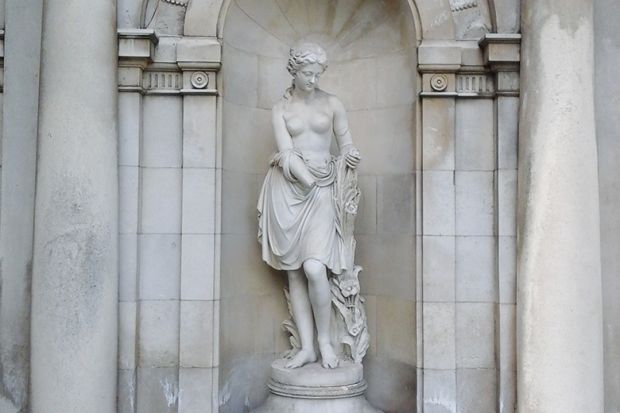Many universities occupy historic campuses, house impressive art collections and hold extensive institutional archives. But how many employ them as teaching resources?
One institution that utilises the heritage on its doorstep is the University of Roehampton. The institution’s west London campus began life as a collection of Georgian mansions, including one, Parkstead House, that shares an architect with central London’s Somerset House. It was home to the Posonby family, including John, an author of the Great Reform Act; Frederick, who became governor of Malta; and Caroline, who, as Caroline Lamb, would base the novel Glenarvon on her affair with Lord Byron.
These buildings sit within gardens and share space with a 19th-century mausoleum, lakes, a First World War memorial and more recent Modernist buildings.
Meanwhile, the four colleges that make up the university all have their roots in 19th-century teacher training centres, each with an individual religious ideology: Whitelands (Anglican), Digby Stuart (Roman Catholic), Southlands (Methodist) and Froebel (humanist).
This inheritance provides the backdrop for an interdisciplinary module available to history and classical civilisation students that covers topics including Neoclassical architecture and art, women’s education in 19th- and 20th-century Britain, and national educational policies of the past 175 years.
For classicists, the only original artefact is the body of Saint Sabbatia, a Catholic martyr whose remains were interred in Digby Stuart College’s chapel in the late 19th century as an example to its young female students. But the campus’ Neoclassical follies also offer opportunities to consider the reception and reinterpretation of the classical past.
Students on the course also get the opportunity to examine primary materials in the university’s collections and archives, before undertaking a research project of their own choosing on a topic related to the campus. This must be presented in a public forum, be it via an online video or audio file, a poster or display, or even a guided tour. There is also a module blog where students reflect on their experiences.
Sonya Nevin, a Classics researcher at Roehampton, said that the module afforded students opportunities to develop new skills in handling and interpreting material objects, as well as a chance to build deeper engagement with their university.
“Sometimes the nice rooms in the university are not rooms the students get to go into very much,” she told Times Higher Education. “The course literally opened doors for them.”
Given the environment in which the course is conducted, there might be a class bias towards studying the aristocratic families who lived on the campus and their life histories. However, this does not have to be the case, explained Dr Nevin, who said that one student had carried out a study of highwaymen operating in the area. In future, there will be greater emphasis on the working people who were employed on the estates.
With Charlotte Behr, a reader in the humanities department, Dr Nevin has published an article about the project in Arts and Humanities in Higher Education, which concludes that using the campus as a focus for research “has been found to be extremely engaging and motivating for students”.
“Every university is different and unique, still the underlying ideas and principles of the module are transferable and can be adapted to local conditions to the benefit of student development and university-community relations,” the researchers write.
POSTSCRIPT:
Print headline: Roehampton: a learning estate
Register to continue
Why register?
- Registration is free and only takes a moment
- Once registered, you can read 3 articles a month
- Sign up for our newsletter
Subscribe
Or subscribe for unlimited access to:
- Unlimited access to news, views, insights & reviews
- Digital editions
- Digital access to THE’s university and college rankings analysis
Already registered or a current subscriber? Login








